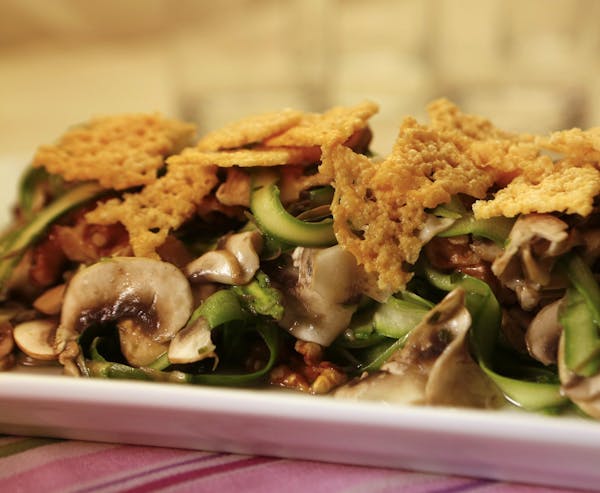I like to think that I'm the kind of open-minded cook who loves all ingredients equally. But I'm not.
I build family celebrations around asparagus.
I'm not talking about just any asparagus but specifically the jumbo spears grown by a particular farm in California. They're as big around as your thumb, available only a few weeks every year and, when cooked right, have an incomparably delicate flavor and a texture like asparagus mousse.
When they first come in, I buy a pound of them per person, boil them or steam them as the mood strikes, being careful to push them just beyond the edge of culinary propriety — cooking them just until they sag when lifted. Then I dress them very simply with good olive oil, lemon juice and coarse salt.
That will be dinner — well, some bread and butter to sop up the juices, and a glass of white wine (preferably Navarro Vineyard's rose-scented Gewürztraminer, which takes to notoriously difficult asparagus like nothing else I've found).
Especially for the first meal of the season, you want to prepare asparagus as simply as possible to best appreciate the sublime flavor and texture.
After that, though, there are no limits.
How else do I prepare asparagus? It really depends on what size of spears I have.
For the really thick jumbos, I stay pretty close to the essentials (one hint: prepare them by cutting off the bases where they turn from pale to green, then peel from the tip down, starting with light pressure and finishing hard; this is how you avoid tough fibers and still get the most meat).
If I've got wiry thin spears, I'll use them as an ingredient — stir them into risotto or pasta, maybe make a frittata with them. You don't need to peel these, just cut off the bases.
The spears that fall in the middle — those about as big around as your little finger — will work with either of those preparations.
But I like to glaze these. Peel them as you would the thick spears (but very lightly!). Lay them flat in a skillet and add just enough water to barely cover the bottom of the pan and a healthy knob of butter or glug of olive oil. Cook, covered, over medium heat until the spears are almost tender (you'll feel it when you poke them with a small, sharp knife). Remove the lid, raise the heat to high and cook until the liquid has reduced to an intensely asparagus-flavored sauce.
Serve this just as it is, or top it with a sunny-side-up egg for dinner.
Lately my favorite way to cook asparagus has been not to cook it at all. Just as you can use a vegetable peeler to make "noodles" from zucchini or cucumbers, if you work very carefully, you can shave asparagus spears into long thin strips that are absolutely delicious raw.
You can dress these very simply with a lemon vinaigrette or use them as the base for something a little more interesting. My current favorite is tossing them with thinly sliced mushrooms, walnuts and those wonderfully toasty golden bits of melted Parmesan called frico.
Still, I know I'm nowhere close to running out of asparagus preparations. One of my cooking heroes, Alain Passard, has a famous preparation in which he stands the spears up in a tall, narrow pan and cooks them very slowly for 2 ½ hours, constantly basting the tips with butter.
Someday when I have the time — or a sous-chef — I will try that one, too.

Review: Sibling pop band AJR put on a fun show in St. Paul, but not a good concert
Israelis grapple with how to celebrate Passover, a holiday about freedom, while many remain captive
A Georgia beach aims to disrupt Black students' spring bash after big crowds brought chaos in 2023
Today in History: April 18, San Francisco's great earthquake sets off fires, thousands die

